Nebraska Public Power District Board Approves Net-Zero Carbon Emissions Goal
December 14, 2021
by Paul Ciampoli
APPA News Director
December 14, 2021
Nebraska Public Power District’s (NPPD) Board of Directors on Dec. 13 approved a goal to achieve net-zero carbon emissions from generation resources by 2050.
In the process of developing this goal, NPPD worked with external consultants to explore potential scenarios for getting its generation mix to net-zero carbon emissions, garnered extensive feedback from wholesale customers, hosted five public information forums across the state, and received thousands of responses to a survey on the topic.
NPPD currently serves its Nebraska customers with roughly 65 percent carbon free energy resources, due in large part to the Cooper Nuclear Station, in addition to hydro, wind and solar generation.
NPPD provides energy to customers in 86 of Nebraska’s 93 counties, including more than 92,000 residential, commercial and industrial customers in 79 Nebraska communities. NPPD also has wholesale power supply agreements with 38 municipalities and 23 rural public power districts and/or cooperatives.
More information and resources can be found at https://www.nppd.com/powering-nebraska/powering-our-future.
Other public power utilities in Nebraska have launched similar efforts.
Omaha Public Power District is examining how it can make progress toward its goal of net-zero carbon production by 2050, while Lincoln Electric System has set a goal of eliminating its carbon dioxide production from its generation portfolio by 2040.
Public Power Utilities Work To Restore Power In Wake Of Tornadoes
December 13, 2021
by Paul Ciampoli
APPA News Director
December 13, 2021
Public power utilities in several states are working to restore power in the wake of a string of deadly tornadoes that hit communities on the evening of Friday, Dec. 10.
“The devastation caused by tornadoes in several states last night is heartbreaking,” said Joy Ditto, President and CEO of the American Public Power Association (APPA), on Dec. 11. “My thoughts and prayers go out to the families who have lost their loved ones in this tragedy. I also greatly appreciate the work of the first responders still helping to rescue those in need.”
The tornadoes cut a destructive path through Kentucky, Missouri, Arkansas, Illinois, Mississippi, and Tennessee.
Utilities in the regions affected by the destructive storms have started to send utility crews to help restore power where electric infrastructure was damaged and are working with others in the electric sector to identify unmet needs.
President Biden on Dec. 11 noted that he had already spoken several times with the head of the Federal Emergency Management Agency (FEMA) and that FEMA has deployed emergency response personnel to these states, search-and-rescue teams, water and other supplies.
“FEMA is on the ground working with each of the states to assess the damages and focus on federal support where it is needed most and how we can get there most rapidly,” Biden said.
Biden has approved the emergency declaration that was requested by Kentucky Governor Andy Beshear. “That’s going to accelerate federal emergency assistance for Kentucky right now, when it’s urgently needed,” the President said.
In Mayfield, Ky., public power utility Mayfield Electric & Water Systems reported that its electric substation took a direct hit. “We do not have transmission to the substation. The restoration time frame is unknown, however we do expect outages to last days and possibly even week.”
On Monday, Dec. 13, Mayfield Electric & Water Systems reported that repairs to the substation were ongoing. “Crews are clearing lines, repairing poles, and hope to have 3 circuits ready by 12/15,” the utility said on its Facebook page.
A candle factory in Mayfield that collapsed with workers inside will likely lead to the most fatalities of the severe weather event, according to Kentucky Gov. Andy Beshear, the Louisville Courier Journal reported.
On Sunday, Dec. 12, Kentucky public power utility Bowling Green Municipal Utilities reported that crews were “already hard at work for what will be another very long day.” The utility also gave thanks to a number of public power utilities and communities for helping it with restoration efforts:
- Gallatin Department of Electricity (Gallatin, Tenn.)
- Glasgow EPB (Glasgow, Ky.)
- City of Franklin, Tenn.
- City of Springfield, Tenn.
Electric Cities of Georgia (ECG), which serves as state coordinator in the American Public Power Association’s mutual aid network, sent personnel to Bowling Green to assist in restoration efforts, along with the following public power communities in Georgia that sent crews to help Bowling Green:
- Calhoun
- Marietta
- Acworth
- Thomasville
- Cartersville
- Covington
- Dalton
- East Point
- Griffin
- LaGrange
- Newnan
- Cairo
- West Point
All of the communities are members of ECG, which is a non-profit organization providing strategic and technical services to 52 public power communities with utility operations.
Meanwhile, The Frankfort Plant Board (FPB), a public power utility located in Frankfort, Ky., reported that it was sending a crew to help restore power to the city of Princeton, Ky.
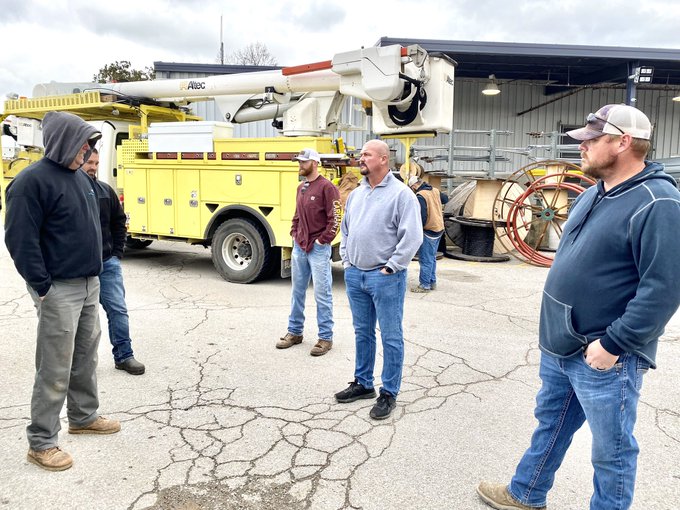
An FPB crew of eight electric linemen is loading up an auger truck, two bucket trucks and a foreman’s pickup truck with food, water and as many materials as they can haul, FBP reported Dec. 11.
“As our hearts break to see the devastation that is unfolding in west Kentucky, our FPB crews are going to do what we do best – get the lights back on,” said FPB Communications Director Cathy Lindsey. “This is what we can do today to help.”
FPB is part of a mutual aid network through the Kentucky Municipal Utilities Association (KMUA). KMUA coordinates with APPA, which organizes crews from the more than 2,000 public power utilities members to send to areas in need.
“This network makes resources rapidly available during a disaster and ensures that power is restored to those in need as quickly as possible while keeping outside entities from price gouging for labor and materials,” FPB noted.
The Tennessee Valley Authority (TVA) on Dec. 12 reported that early Sunday morning, crews restored power to local power company connection points near Glasgow, Ky., and Lexington, Tenn. “Devastating tornados caused widespread damage in portions of western Kentucky, and middle Tennessee early Saturday morning,” TVA reported.
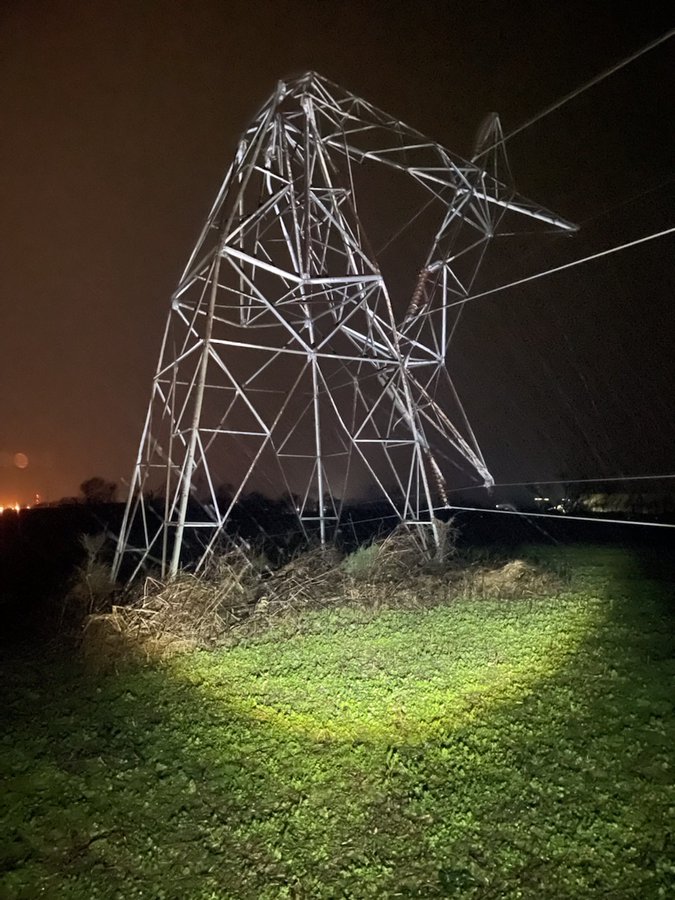
Over the weekend, TVA said that over 60 high-voltage transmission structures in Kentucky and Tennessee had been damaged, the most devastating storms since the 2011 tornado outbreak that affected Alabama, Mississippi and Tennessee. “Our crews are assessing damage and mobilizing for repairs,” TVA said.
On Monday, Dec. 13, TVA said its personnel continued to work to repair damaged power transmission equipment in the areas impacted by the recent severe weather. Power has been restored to more than half of those initially affected.
Initial damage assessments to TVA’s power system were completed on Sunday and confirmed that the weekend’s storms were the most destructive to impact the region since the April 2011 tornado outbreak, with at least 100 transmission towers and poles were damaged or destroyed and 29 TVA transmission lines were knocked out of service.
Immediately after the storms, more than 20 customer connection points – the interface between TVA’s system and local power companies – were offline and more than 250,000 electric users were without power.
The safety of TVA’s team members, emergency responders and the public remain the highest priority, TVA said.
Since deploying immediately after the storms passed, TVA and local power company repair crews have made significant progress:
- 12 customer connection points have been restored in northwestern Tennessee and western Kentucky, reducing the number of individuals without power by more than 57% from Saturday’s peak.
- Nine TVA transmission lines that directly supply electricity to local power companies remain out of service and are the primary focus of TVA’s current restoration efforts.
- TVA helicopters have completed initial damage assessments of the impacted transmission system; engineers are working to finalize repair plans, and materials needed to restore the system are being transported to the area.
- More than 160 TVA line workers and additional contractor line crews are working 24/7 to repair damage.
- Portable transformers and additional equipment are already arriving in the hardest hit areas to temporarily restore service to severely damaged switchyards while more permanent repairs can be made.
The region’s public power system is a partnership between TVA and local power companies. TVA’s transmission system delivers power to connection points with local power companies, whose own distribution systems supply power directly to homes and businesses. Both systems must be operational to safely provide reliable electricity, it noted.
“Due to the extent of the damage in some areas, TVA is unable to provide any specific time for full restoration. The need to repair both TVA’s transmission system and local power company distribution systems may lead to longer restoration timing.”
Public power utility Nashville Electric Service (NES) on Sunday, Dec. 12, reported that its crews were continuing to restore power to the remaining 11,177 customers without power, down from the 95,000 outages at the start of its efforts.
On Monday, NES said that as of 8 a.m., about 2,000 NES customers remained without power, down from 4,000 Sunday night. NES crews will continue to work around the clock to restore power to everyone in the service area, it said.
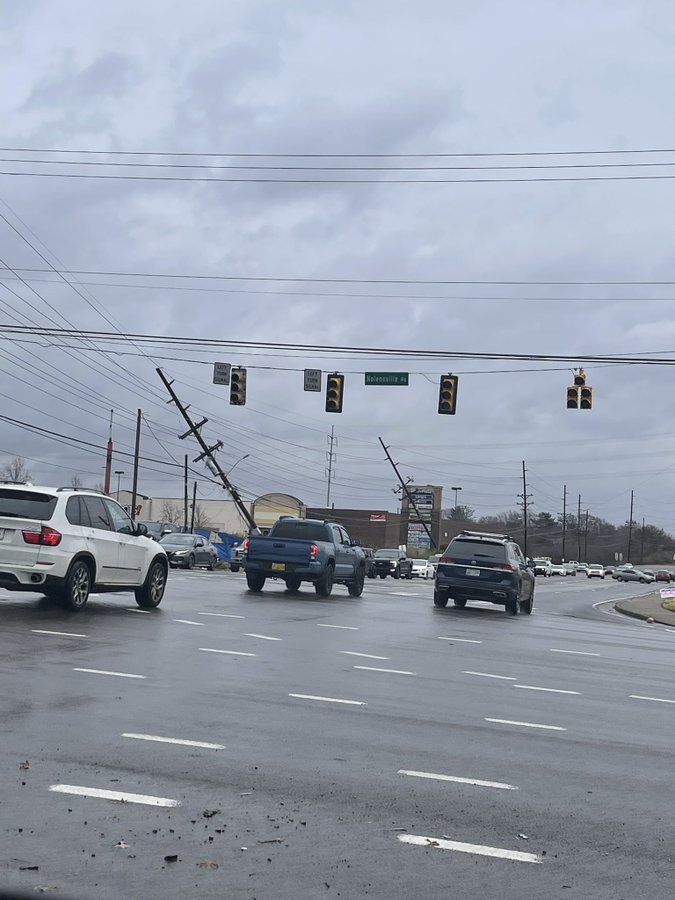
NES launched a special website to assist customers affected by the storms (http://poweroutage.nespowerinfo.com), which includes the latest outage map, storm Q&A and other helpful resources.
Senate Finance Committee Proposal Includes Direct Payment Of Energy-Related Tax Credits
December 12, 2021
by Paul Ciampoli
APPA News Director
December 12, 2021
The Senate Finance Committee on Dec. 11 released updated text of the Committee’s title of the Build Back Better Act (BBBA) that includes a refundable direct payment of energy-related tax credits, mirroring the House-passed version of the BBBA.
Section 126104 of the tax title would create new section 6417 of the Internal Revenue Code allowing for “elective payment of applicable credits.” These credits include the:
- Section 30C credit for alternative fuel;
- Section 45 production tax credit;
- Section 45Q carbon oxide sequestration credit;
- Section 45V zero-emission nuclear power production credit;
- Section 45W clean hydrogen production credit;
- Section 48 investment tax credit, and
- Section 48D transmission tax credit.
The provision has been specifically written to allow public power utilities and rural electric cooperatives to claim this refundable direct payment tax credits. The Tennessee Valley Authority is also explicitly allowed to claim refundable direct payment tax credits.
In addition, the refundable direct payments would generally be reduced by 15 percent for facilities that are financed with tax-exempt bonds.
Additionally, the section 48 investment tax credit has been expanded to include energy storage technology, qualified biogas property, microgrid controllers, and hydropower environmental improvement property.
Under the bill, the term “hydropower environmental improvement property” means property the purpose of which is to: (1) add or improve safe and effective fish passage, including new or upgraded turbine technology, fish ladders, fishways, or other fish passage technology with respect to a qualified dam; (2) maintain or improve the quality of the water retained or released by a qualified dam, or (3) promote downstream sediment transport processes and habitat maintenance with respect to a qualified dam.
Senate Majority Leader Chuck Schumer, D-N.Y., has said he hopes to bring the bill to a vote in the Senate before December 25 and under the budget reconciliation process.
Under such a process, the bill would require only a simple majority to pass. It remains unclear whether Senate Energy and Natural Resources Committee Chairman Joe Manchin, D-W.Va, and Senator Kyrsten Sinema, D-Ariz., support the bill as currently drafted.
U.S. Storage Market Sets New Installation Record In Q3 2021
December 12, 2021
by Paul Ciampoli
APPA News Director
December 12, 2021
The U.S. energy storage market set a new record in the third quarter of 2021, with new system installations totaling 3,515 megawatt hours (MWh).
Wood Mackenzie and the Energy Storage Association’s latest U.S. Energy Storage Monitor report, released Dec. 9, said with market momentum building, it is likely this storage market record will be broken in the fourth quarter.
In addition, an expected solar investment tax credit (ITC) extension, standalone storage ITC, and a California solar and storage mandate are all assumed in the forecast for the first time this quarter, significantly increasing forecast storage deployment.
The third quarter saw the utility-scale front-of-the-meter (FTM) market deploy 998 MW/3198 MWh, with California, Texas and Arizona leading the segment.
California continued to lead in FTM project deployment, with a trio of projects developed by NextEra Energy Resources near Blythe contributing the majority of the MW for the quarter. Storage projects in Texas developed by Broad Reach Power also boosted third quarter FTM capacity.
Installations increased slightly in the residential market as attachment rates continue to rise, with another 97.9 MW/225 MWh of new residential storage brought online in the quarter.
But project timelines for residential solar-plus-storage remain problematic, with solar module and battery constraints among the challenges contributing to project backlogs. However, vendors and installers managed to increase residential storage deployment over the second quarter.
The non-residential market recorded its best quarter of 2021 so far, with 43.6 MW/92.1 MWh deployed.
Commercial virtual net metered and community solar projects with storage attached contributed most of the non-residential capacity in the third quarter, with most behind-the-meter non-residential projects sited in California.
Peninsula Clean Energy Signs Wind Farm Power Purchase Agreement
December 11, 2021
by Paul Ciampoli
APPA News Director
December 11, 2021
Scout Clean Energy and California community choice aggregator (CCA) Peninsula Clean Energy have signed a 15-year Power Purchase Agreement (PPA) that will provide San Mateo County and City of Los Banos customers with 76.35 megawatts (MW) from the repowering of the Pacheco Pass Wind Farm in Merced County, Calif.
Construction will begin in late 2023 and the project will replace the existing 162-turbine wind farm in Pacheco State Park, originally built nearly four decades ago, with a much-smaller fleet of far more powerful state-of-the-art turbines that are expected to be operational by around the end of October 2024.
While the existing 162 turbines produce 16.5 MW, Scout is planning a total capacity of 147.5 MW of wind energy and a 50-MW four-hour Battery Energy Storage System. The completed project upgrades would be one of the first repower projects on state land in California.
GRWF will be located about 10 miles from the groundbreaking 200-MW Wright Solar Project, which in January 2020 became the largest renewable energy installation at the time ever built for a CCA to officially go online.
Wright Solar was Peninsula Clean Energy’s first project located in Merced County and California’s Central Valley.
Peninsula Clean Energy is the official electricity provider for San Mateo County and, beginning in 2022, for the City of Los Banos.
Founded in 2016, the agency serves 295,000 customers by providing more than 3,500 gigawatt hours annually of electricity.
The American Public Power Association has initiated a new category of membership for community choice aggregation programs.
LCRA Awards More Than $730,000 In Community Grants
December 11, 2021
by Paul Ciampoli
APPA News Director
December 11, 2021
The Lower Colorado River Authority (LCRA) recently awarded more than $730,000 in Community Development Partnership Program (CDPP) grants for a wide range of projects across LCRA’s wholesale electric, water and transmission service areas.
CDPP grants are awarded twice a year for capital projects for volunteer fire departments, emergency responders, cities and counties, schools, libraries, civic groups, museums, and other tax-exempt non-profit organizations.
The grants will help fund 32 community projects, including the purchase of a new firetruck for the Wall Volunteer Fire Department in Tom Green County and renovation of the Wharton Civic Center in Wharton County. Other grants will help fund a new public park alongside the Colorado River in Smithville; the construction of a live-fire training facility in Coleman; and the completion of renovations to public art galleries in downtown Llano.

LCRA serves customers and communities throughout Texas by managing the lower Colorado River, generating and transmitting electric power, providing a clean, reliable water supply and offering outdoor adventures at more than 40 parks along the Colorado River from the Texas Hill Country to the Gulf Coast. LCRA was created by the Texas Legislature in 1934 and receives no state appropriations.
LCRA noted in a Dec. 10 news release that fourteen of the projects will support first responders by providing new protective gear, emergency vehicles and other critical resources. One grant will help pay for a 40,000-gallon water tank that firefighters can use in the Spicewood area, where the nearest fire hydrants are several miles away. Another will provide a new thermal imaging camera and smoke evacuation fans to aid firefighters in Kerr County.
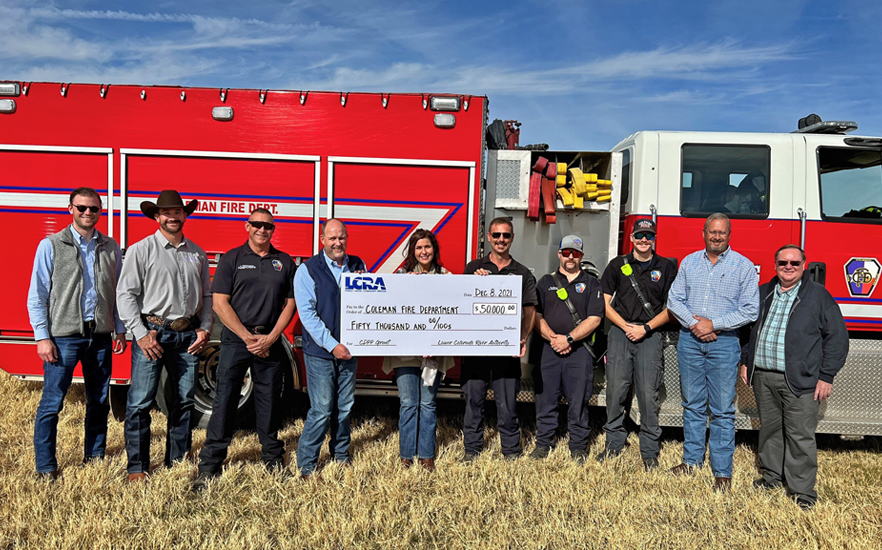
LCRA General Manager Phil Wilson said providing these grants to volunteer fire departments and other first responders is important to help keep communities safe.
“By helping supply new protective gear and better, up-to-date equipment, we can make it easier for first responders to get to emergencies quickly, with top-notch gear at their sides as they work to protect people who need help,” Wilson said.

To date, LCRA and its wholesale electric customers have awarded 1,852 community grants totaling nearly $48 million. When combined with more than $228 million in community-raised matching funds, the program has invested more than $276 million in local communities.
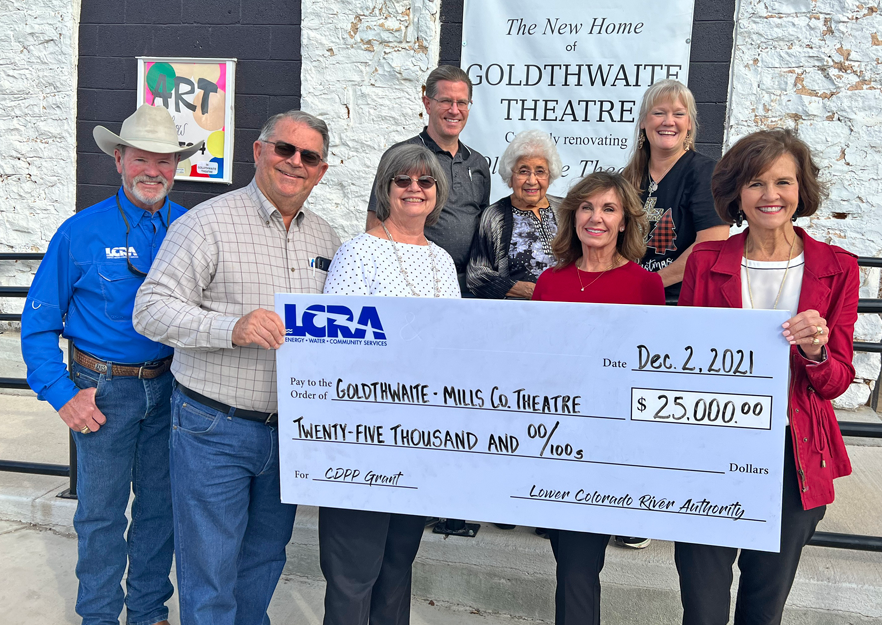
The complete list of the 32 grants awarded in the most recent grant cycle are available here.
Northern California Power Agency Installs EV Chargers At Its Headquarters
December 10, 2021
by Paul Ciampoli
APPA News Director
December 10, 2021
The Northern California Power Agency (NCPA) on Dec. 9 unveiled four new Level 2 electric vehicle (EV) charging stations at its headquarters facility in Roseville, Calif.
The chargers will be available for use by NCPA employees, members, and guests visiting the NCPA premises.
Each of the EV chargers has two ports, allowing up to eight vehicles to charge simultaneously.
The planning, preparation of the site, and installation of the chargers took place over the last 18 months.
Planning started in June 2020. A public works contractor was selected through a competitive process in November 2020 and permitting, construction, and installation of the chargers took place in 2021. The project was completed on Nov. 1, 2021.
In 2020, California Gov. Gavin Newsom issued Executive Order N–79–20, which set a goal of 100% of new light-duty vehicle sales to come from zero-emission vehicles by 2035, with similar goals for medium- and heavy-duty vehicles following ten years later.
NCPA members are encouraging the use of zero-emission vehicles in their communities, including in their fleets and installing new infrastructure to support state policy goals.
The project “is a demonstration of the strong commitment that both NCPA and the City of Roseville Electric Utility have to support transportation electrification as a means to reduce emissions in the local community,” NCPA said.
Roseville Electric provided critical funding and valuable technical support for the commercial installation, helping advance the project from a conceptual plan to a reality. Extending beyond the financial assistance, city staff helped NCPA navigate the permitting process and develop an alternative metering arrangement with the electric utility.
NCPA applied and received a funding reservation through the California Electric Vehicle Infrastructure Program (CALeVIP). The agency anticipates receiving a $28,000 incentive through the program.
CALeVIP is funded through a grant from the California Energy Commission’s Clean Transportation Program.
NCPA is a nonprofit California joint powers agency established in 1968 to construct and operate renewable and low-emitting generating facilities and assist in meeting the wholesale energy needs of its 16 members, which includes Roseville.
President Biden Signs Executive Order Directing Government To Procure Carbon Free Electricity
December 10, 2021
by Paul Ciampoli
APPA News Director
December 10, 2021
President Joseph Biden on Dec. 8 signed an executive order (EO) that directs the federal government to procure 100 percent carbon free electricity on a net annual basis by 2030.
The EO directs the federal government to make only zero-emission vehicle purchases by 2035, including 100 percent zero-emission cars and other light-duty vehicles by 2027. The order also directs the government to achieve a net-zero emissions building portfolio by 2045 and net-zero emissions from federal procurement no later than 2050.
There are also interim goals, including cutting greenhouse gas emissions from federal buildings in half by 2032 and from all federal operations by 65 percent by 2030.
OMB Memorandum
Shalanda Young, acting director of the White House Office of Management and Budget (OMB), issued an accompanying memorandum to agency leaders with instructions on implementing the EO that includes a list of deadlines and annual targets to ensure government-wide progress around the administration’s clean energy initiatives. The memo included annual requirements for agencies to submit updated strategic plans to achieve a zero-emission fleet of federal vehicles.
Additionally, the memo spells out the requirement for agencies to designate a senior official as chief sustainability officer within 30 days of issuing the order. That official should have “the authority to ensure allocation of resources to effectively implement the [executive order],” and will take responsibility for, among other activities, coordinating with leaders including chief information and chief financial and acquisition officers to achieve the policy goals of the executive order.
OMB also called on agencies to use data analytics while conducting capital planning and building retrofits to achieve the EO’s goal of a net-zero emissions building portfolio by 2045, and said plans must ensure fossil-fuel consuming equipment is required to be replaced with carbon pollution-free energy technologies.
Federal Government To Work With Utilities, Others
The federal government will work with utilities, developers, technology firms, financiers and others to purchase electricity produced from resources that generate no carbon emissions, including solar and wind, for all its operations by 2030.
Half of the federal government’s 100 percent carbon free annual electricity demand will be procured on a 24/7 basis.
“With the scope and scale of this electricity demand, the federal government expects it will catalyze the development of at least 10 gigawatts of new American clean electricity production by 2030,” the White House said in a news release.
The EO also addresses environmental justice, noting that ensuring economic equity and environmental justice are key considerations in operations planning and decision making.
The Council on Environmental Quality will issue guidance, as necessary, to implement the order, and among the principal agencies targeted for action under the EO are the Army Corps of Engineers, Department of Justice, Interior, Environmental Protection Agency, and Department of Energy.
Concepts in the EO, such as what it means to “buy clean” and how carbon pollution-free electricity is defined, could be more formally adopted through proposed rules.
The EO is available here.
Biden Signs Executive Order Aimed At Addressing Climate Change
Shortly after Biden took office, he vowed to use the power of the federal purse to help achieve his administration’s climate change goals, which includes a net-zero economy by 2050.
In January, Biden signed an EO aimed at addressing climate change that consists of two major parts, with the first part addressing foreign policy and national security and the second part focused on a domestic “government-wide” approach.
The executive order establishes the roles and responsibilities of both the Special Presidential Envoy for Climate, focused on international activities, and the National Climate Advisor, focused on domestic efforts.
It also creates a National Climate Task Force comprised of cabinet members and agency leaders. Those leaders will be tasked with, among other things, creating a federal clean electricity and vehicle procurement strategy that will use as available procurement authorities to achieve or facilitate “a carbon pollution-free electricity sector no later than 2035” and “clean and zero-emission vehicles for Federal, State, local, and Tribal government fleets.
ERCOT, Texas PUC Leaders Detail Actions Taken To Bolster Grid Reliability This Winter
December 9, 2021
by Paul Ciampoli
APPA News Director
December 9, 2021
Public Utilities Commission of Texas (PUCT) Chairman Peter Lake and Electric Reliability Council of Texas (ERCOT) Interim President and CEO Brad Jones recently provided an update on grid operations and the actions their organizations are taking to improve grid reliability this winter.
At a press conference, Lake and Jones detailed the ongoing reforms and actions underway to ensure a stronger and safer grid, including:
- ERCOT will continue policies put in place this summer that operate the grid in a conservative manner with an abundance of power reserves;
- ERCOT’s Emergency Response System that allows large electric consumers to curtail their usage under direction from ERCOT can now be used before the grid encounters emergency conditions;
- The PUCT has reduced the cap on high prices that can be charged when supply is tightest, lowering the cap from $9,000 per megawatt hour (MWh) to $5,000 per MWh;
- Along with the Railroad Commission of Texas, the PUC has adopted a rule to designate natural gas facilities that are critical to the operation of the electric grid; and
- PUCT rules required the weatherization of power plants in Texas by December 1. This will be verified by ERCOT inspections of power plants
In addition, penalties for violating weatherization rules have increased to $1,000,000 per day per violation.
PUCT Staff Files Reports Of Violation Against Generation Companies
PUCT staff on Dec. 8 filed reports of violation against eight generation companies for failure to file winter weather readiness reports by the Dec. 1, 2021 deadline.
Out of the 850 generation resources in the state, PUCT’s Division of Compliance and Enforcement identified 13 separate generation resources owned by the eight companies that missed the deadline. These 13 resources have the ability to generate 801 megawatts of electricity out of the state’s total installed capacity of 120,000 MW, or less than one percent of the state’s total.
The winter weather readiness reports are critical to ensure the generation fleet in Texas is more prepared to provide service through severe winter weather, the PUCT Said. Failure to file winter weather readiness reports on time does not indicate whether or not these companies have taken the steps to weatherize their facilities. Subsequent inspections by ERCOT will verify that.
In October 2021, the PUCT adopted a new rule requiring power generators and electric transmission companies to take actions based on weather preparation best practices in advance of the 2021-2022winter season.
Entities receiving violations have 20 days to respond to the notice of violation and can request a hearing.
Grant PUD GM, CEO Kevin Nordt Steps Down Amid Battle With Prostate Cancer
December 9, 2021
by Paul Ciampoli
APPA News Director
December 9, 2021
Grant PUD General Manager and CEO Kevin Nordt stepped down on Dec. 6 to assume an important but less physically demanding role in helping assure a long-term power supply for Grant PUD customers, the PUD said on Dec. 2.
Nordt, 56, has undergone vigorous treatment for prostate cancer since he was diagnosed in June 2020, the Washington State PUD noted.

Grant PUD Chief Operations Officer Rich Wallen will become acting general manager through the balance of the year until commissioners decide on a longer-term appointment.
“I have responded well to my treatments but I also have seen my capabilities diminish significantly. This is no surprise; just part of the deal,” Nordt said in a statement. “I have now come to the realization that my health no longer allows me to function in the role of general manager/CEO at the level our employees and the people of Grant County deserve. Rich Wallen is a skilled and wonderful fellow. I will do everything I can to make he and Grant PUD successful, going forward,” he said.
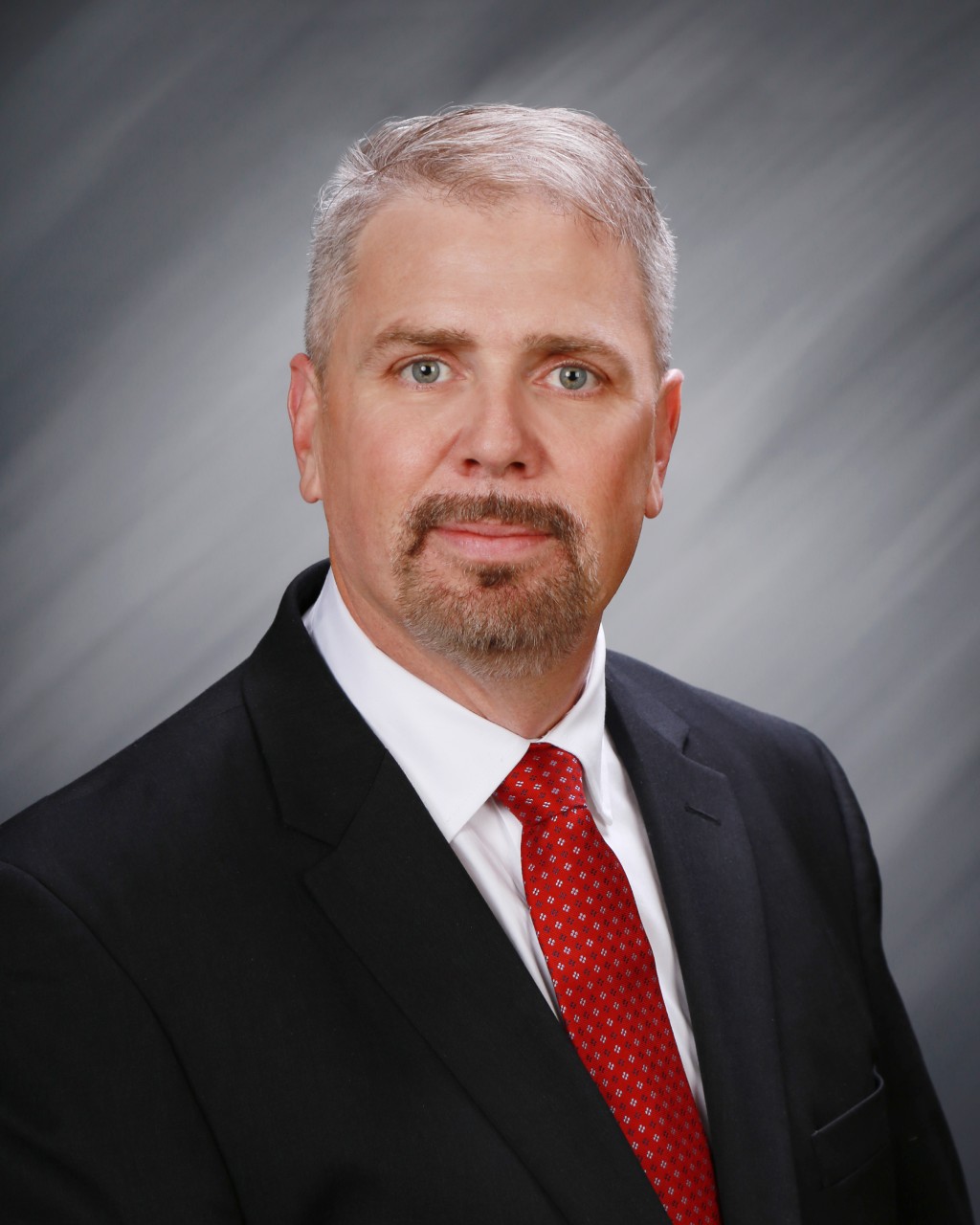
Nordt will take on the new executive role of chief resource officer, working with a team of employees to assure Grant PUD a long-term power supply. The move comes strategically, as Grant PUD evaluates new resources to meet future customer needs, the PUD noted.
Nordt began his career at Grant PUD in 2006 after years as a nuclear engineer, energy trader, analyst and power supply strategy manager for Portland General Electric and later as coordinator of Mid-Columbia River dam operations. He began at Grant PUD as director of power management and then as chief financial officer. Commissioners selected him as general manager in June 2016.
